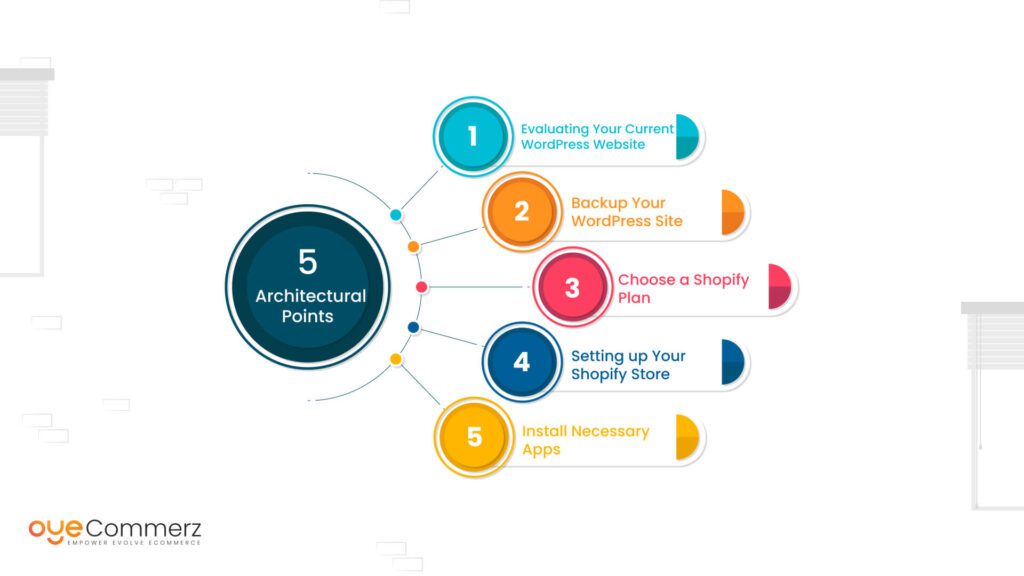Shifting from WordPress to Shopify marks an exciting step in optimizing your e-commerce processes. As companies grow, choosing a platform that supports growth potential, UX, and flexibility becomes crucial. Shopify has emerged as a favorite for e-commerce professionals, providing unmatched adaptability, security, and user-friendliness. In this guide, we will delve into the transformative impact of this migration, discuss the benefits, and share actionable steps to facilitate a smooth move.
1. Why Migrate from WP to Shopify?
WordPress, paired with WooCommerce, has served countless e-commerce platforms. However, as companies scale, issues like reliance on plugins, security vulnerabilities, and complex setups often obstruct growth. Shopify, specifically created for e-commerce, eliminates these issues with an comprehensive, user-friendly platform. Real data back this shift—Shopify hosts over 4.4 million websites worldwide, with a documented 10% boost to sales conversion rates for many businesses after migration.
2. Shopify's Perks for Thriving Online Stores
Shopify’s powerful platform is tailored for expanding brands. Its notable features include:
- Seamless Customization: Shopify provides over 80 expertly crafted themes.
- Integrated Tools: Capabilities such as Shopify Payments and integrated SEO save time and effort.
- International Expansion: Multi-currency support and localization features enable brands to reach global markets.
Additionally, Shopify boasts an availability percentage of 99.98%, ensuring your store is always operational.
3. Getting Ready for Your WP-to-Shopify Transition
Before migrating, assess your existing setup. Analyze product data, customer details, and SEO performance. Resources such as Shopify’s Migration Kit or external tools can simplify this process. Develop a comprehensive plan, ensuring all assets—item details, images, and blog content—are optimized for transfer.
4. Data Migration: A Critical WordPress to Shopify comparison Step
Transferring your data forms the foundation for a smooth platform switch. When migrating from WP to Shopify, prioritize:
- Inventory Details: SKU, descriptions, and groupings.
- Client Information: Emails, order history, and preferences.
- SEO Optimization: Preserve E-commerce platform solutions meta tags, URLs, and redirects to avoid SEO losses.
Use apps like LitExtension to facilitate seamless migration while minimizing errors.
5. Customizing Your Shopify Store
After the move, personalizing your Shopify store helps it reflects your business identity. Take advantage of Shopify’s intuitive page builder to create layouts with ease. Shopify's templates are mobile-responsive, ensuring a seamless UX across devices—a key point, since 74% of online shopping comes from mobile visitors.
6. Maintaining SEO During Migration
SEO is vital for preserving your online presence during migration. Shopify is highly optimized for search engines with organized link formatting, preloaded features, and smooth content management. Ensure:
- Implement 301 redirects for existing links.
- Optimize new pages with targeted phrases.
- Leverage plugins like Plug in SEO to monitor performance post-migration.
7. Essential Tests After Migrating to Shopify
After finishing the transfer, run detailed checks.
Check: - Website speed (Shopify boasts faster speeds compared to WordPress).
- Functionality of payment gateways and checkout processes.
- Mobile responsiveness.
Quality assurance ensures your store delivers a seamless shopping experience from day one.
8. Real-Life Success Story
An example of effective platform switching is Gymshark, a sportswear company that moved to Shopify. Post-migration, the company saw a 60% increase in mobile sales and reduced site downtime. This showcases the capabilities of Shopify in driving online business success.
9. Challenges and Solutions
Migration comes with challenges, such as data integrity and adjusting tailored features. However, Shopify’s extensive assistance and third-party experts simplify the process. Partnering with qualified Shopify developers ensures a smooth transition.
10. Making the Switch: The First Step Toward Success
Migrating from WordPress to Shopify represents a strategic decision to online retail. By focusing on growth, simplifying management, and improving buyer satisfaction, Shopify enables companies to succeed in competitive markets.
Final Thoughts
Switching from WP to Shopify is a strategic move that can significantly boost your e-commerce success. With a robust migration plan, the right tools, and expert support, you can achieve new success milestones.
Excited to start the journey? Let’s discuss how our Shopify migration services can transform your online store. Contact us now, or consider: Can your business afford to miss out on Shopify’s growth potential?
